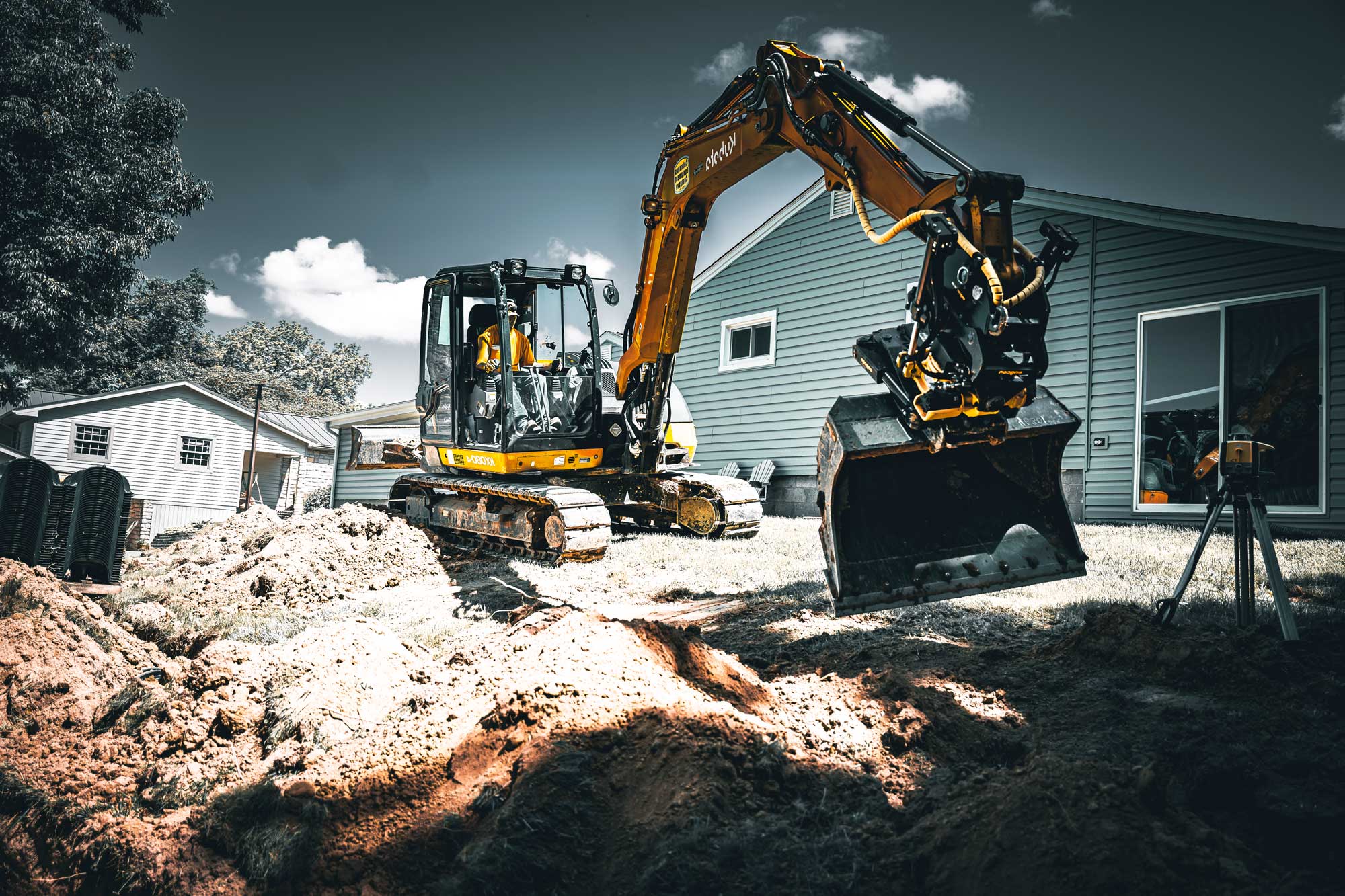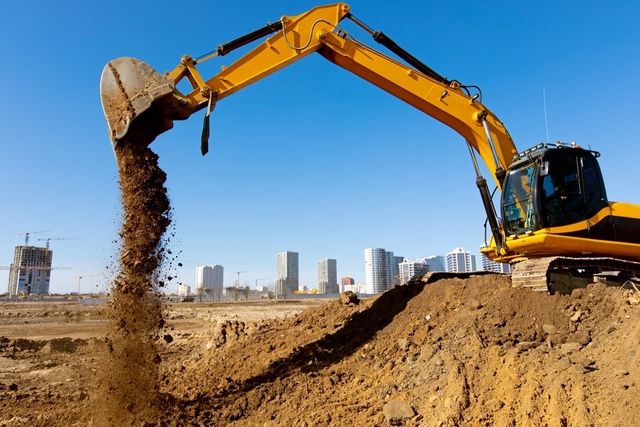Residential Excavating Ohio - Specialized Excavation for Ohio Homes
Residential Excavating Ohio - Specialized Excavation for Ohio Homes
Blog Article
Unveiling the Art of Excavation: Pro Tips for Safe and Effective Excavating
As dirt is transformed and planet is moved, the details of excavation expose themselves, requiring a keen understanding of tools, dirt structure, security methods, and ecological factors to consider. The know-how required to browse these elements successfully can imply the distinction in between an effective excavation project and a prospective disaster.
Significance of Appropriate Devices
To make certain the safety and effectiveness of any kind of excavation job, using the appropriate tools is extremely important. The right devices not only boost performance however additionally reduce threats associated with excavating. Excavation jobs vary in scope and intricacy, ranging from tiny residential landscaping tasks to large-scale building and construction undertakings. Regardless of the job size, having the appropriate devices can make a substantial distinction in the result.
Excavators are fundamental items of equipment in any type of excavating procedure. These flexible machines been available in different sizes to match various job requirements. Small excavators are excellent for smaller sized jobs, while larger excavators deal with extra substantial jobs successfully. Backhoes are one more crucial devices kind, combining the functions of a loader and an excavator in one maker. They are important for jobs needing convenience and ability to move.
In addition to excavators, various other critical devices consists of dump trenchers, trucks, and excavators. Discard trucks are essential for getting rid of and delivering excavated products, while plates are utilized for excavating deep and slim trenches. Excavators master jobs that need pressing large amounts of soil or debris. By buying the proper tools, excavation jobs can be completed safely, on schedule, and with accuracy.
Recognizing Dirt Make-up
A thorough understanding of dirt composition is fundamental for carrying out excavation jobs with accuracy and safety and security. Comprehending the various kinds of soil is vital as it directly affects excavation methods, tools option, and general task effectiveness. Soil make-up commonly is composed of 4 major elements: sand, silt, clay, and natural matter. Each element has distinct residential or commercial properties that influence just how soil reacts to excavation processes.
Sand fragments are the largest and provide excellent drainage yet offer little communication. Silt bits are smaller sized than sand yet larger than clay, supplying moderate drainage and cohesion. Clay fragments are the smallest and provide high cohesion yet inadequate water drainage. Raw material, such as decaying plant material, impacts soil fertility and security.
Before commencing excavation, carrying out dirt examinations to identify its composition and qualities is necessary. This info aids in choosing the ideal tools, applying safety and security actions, and developing excavation approaches tailored to the specific dirt conditions - lancaster excavation. By comprehending soil make-up, excavation specialists can enhance project end results while making sure safety and security and adherence to ideal practices
Safety And Security Actions and Methods
Understanding soil composition is the cornerstone whereupon precaution and protocols for excavation jobs are developed, making sure the health of employees and the success of the undertaking. my website There are numerous vital steps that must be carried out to reduce risks and protect against mishaps. when it comes to safety and security throughout excavation.
Most importantly, before any type of digging commences, a complete inspection of the site need to be carried out to identify any prospective threats such as below ground utilities, unsteady dirt problems, or neighboring structures that could posture a danger. It is vital to have a proficient individual look after the excavation process to guarantee that all safety and security protocols are followed purely.
Additionally, all workers involved in the excavation needs to be correctly educated in secure excavating methods and the proper operation of tools. By adhering to these safety and security procedures and protocols, excavation tasks can be completed effectively and without incident.
Effective Excavation Preparation
When getting started on an excavation task, precise planning is crucial to guarantee performance, safety, and successful end click for more info results. Reliable excavation planning entails numerous essential steps that are essential for the smooth execution of the task.
Once the site assessment is full, the following action is to develop a clear timeline and schedule for the excavation tasks. This includes establishing the sequence of jobs, tools needs, and workforce allowance. Correct scheduling helps avoid delays and ensures that the job remains on track.

Additionally, interaction amongst all group members is extremely important during the planning phase. Clear directives, routine updates, and effective control are necessary for an effective excavation job. By investing effort and time in meticulous preparation, excavation teams can dramatically improve performance, reduce dangers, and achieve effective outcomes.

Handling Ecological Factors To Consider
With increasing emphasis on ecological sustainability in building and construction methods, handling ecological factors to consider has actually become a crucial element of excavation tasks. Excavation activities have the prospective to influence the surrounding atmosphere with soil disintegration, debris overflow, habitat disruption, and contamination of water resources. To mitigate these dangers, it is necessary to implement best techniques that prioritize environmental management.

Additionally, correct waste monitoring is critical to prevent dirt and water contamination. Carrying out treatments for the disposal of hazardous materials, recycling of waste materials, and lessening the use of hazardous chemicals can considerably reduce the environmental influence of excavation tasks. By integrating these practices into excavation preparation and execution, like it building and construction companies can make sure that their projects are not just safe and efficient but additionally environmentally responsible.
Final Thought
In conclusion, mastering the art of excavation calls for a thorough understanding of proper tools, soil composition, safety and security actions, and efficient planning. By complying with these standards and considering ecological aspects, excavations can be conducted safely and effectively. It is important to focus on security and efficiency in every excavating job to ensure effective outcomes.
As dirt is turned and planet is moved, the details of excavation reveal themselves, requiring an eager understanding of tools, dirt composition, safety and security methods, and environmental considerations.To guarantee the safety and security and effectiveness of any excavation task, utilizing the suitable devices is critical.An extensive understanding of soil composition is basic for implementing excavation tasks with precision and safety and security. Recognizing the various kinds of dirt is vital as it directly impacts excavation methods, tools option, and total project efficiency. By understanding soil composition, excavation experts can enhance job end results while guaranteeing safety and security and adherence to best methods.
Report this page